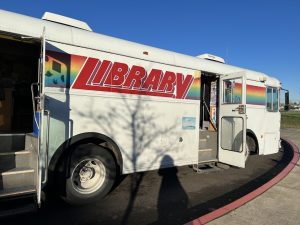In reading about hyperlinked libraries and communities over the last couple weeks, I can’t help but recognize the theme of accessibility and inclusivity throughout the articles and other materials. At its heart, hyperlinked libraries and communities revolve around the idea of connection, communication, and creativity, and they inherently promote the idea of libraries expanding their reach to include more people and populations.
I appreciated how Lauersen explains the differences between diversity and inclusion, writing that “Diversity is being invited to a party. Inclusion is being asked to dance” (Lauersen, 2018). Of course, diversity in libraries is important, especially in the contexts of representation of marginalized identities through library materials’ authors, characters, and library staff. However, the presence of diverse people and library materials isn’t enough to sit back and call it a day. Inclusivity is an active process that necessitates consistent efforts to ensure that there is equitable access to information and library resources.
With the event of the COVID-19 pandemic and related shut downs of physical library services, many libraries put more emphasis into virtual and online library resources. Although, this expansion of services contributes to library accessibility efforts outside of a pandemic setting as well. Many people face barriers to accessing physical library spaces for a miriad of reasons, such as transportation limitations, physical disabilities, or lack of childcare support. Online and virtual library services promote accessibility outside of a physical library setting, and Lauersen writes in a recent 2025 article about the use of bookmobiles and how they aid in library accessibility (Lauersen, 2025). I personally have a spot in my heart for bookmobiles and remember them fondly from my childhood, but they’re also an excellent tool to promote reading, literacy, curiosity, and education for our communities outside the walls of a physical library location. For people with limited internet access at home, bookmobiles can be a way to better fulfill the library and information needs of our underserved community members.

Assistance League– Salem-Keizer. (n.d.). Image of bookmobile from Salem, OR (my hometown). The bookmobile is a white bus with “Library” and a rainbow painted on the outside. Activities | Assistance League – Salem-Keizer. Retrieved March 2, 2025, from https://www.assistanceleague.org/salem-keizer/activities/.
Lauersen, C. (2018, June 7). Do you want to dance? Inclusion and belonging in libraries and beyond. The Library Lab. https://christianlauersen.net/2018/06/07/inclusion-and-belonging-in-libraries-and-beyond/
Hi Gwen,
This is a fantastic post on the accessible and inclusive nature of the Hyperlinked Library. Communication can appear in numerous manners, and it’s the librarian’s job to learn how to talk to all of their users (in-person and online). I was especially drawn to your discussion of post-pandemic services, particularly on the subject of physical spaces. As librarians, we need to be conscious of users who don’t come to the library—more specifically, users who can’t come to the library. Homebound users can still be supported in numerous ways, such as: online library card applications, online orders, visitation programs, or specific kits based on a user’s needs. Bookmobiles are another great method to bring the library directly to the user, just as you mentioned. Libraries cannot truly succeed without the effort that is inclusivity. I love the picture from Salem that you added—wonderful post!
Thank you Lorraine! I love the bookmobile love haha 🙂
Hi Gwen,
The quote, “Diversity is being invited to a party. Inclusion is being asked to dance” (Lauersen, 2018), really stuck out. Being invited is one thing but being included and actively participating makes the experience so much better. I like that you talked about two ways that promote inclusivity and accessibility. One is virtual programs, which can be viewed from anywhere worldwide. I like when libraries have YouTube channels so I can access the program later and interact asynchronously.The other was bookmobiles, where the library comes to the patron. I think that it is such an excellent tool for introducing patrons to library services. I went to an educational event once that had free food and books. It was a nice experience, and I remember being excited about the book I received. Do you plan on doing outreach via bookmobiles?
Hi Kazuko,
I would love to do outreach via bookmobiles if possible! I am planning to work in college level libraries, and I’m honestly not sure how common they are for academic libraries in comparison to public libraries. I’m definitely planning to advocate for them as much as possible though!
@gwenss Christian’s approach to library service has deeply resonated with me in the last few years. I was honored to spend an afternoon with him a few years ago. His ideas about inclusivity point toward a promising future if we heed the call.